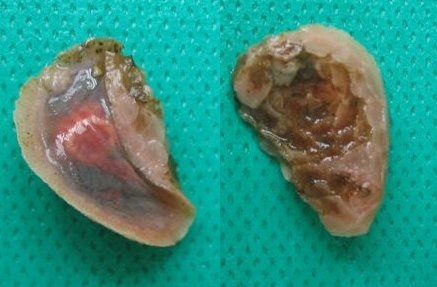|
Identified:
Discussions:
-
It
looks similar to a species we have in Puget Sound (Washington State,
U.S.A.)that's an echinoderm (holothurian). It's called Psolus
chitonoides, (a sea cucumber "resembling a chiton").
The description states; "the shape of a short cucumber sliced
lengthwise, for one side of it- the side with the tube feet-is almost
perfectly flat. It clings tightly to rocks and is essentially sedentary.
The upper surface is covered with overlapping calcareous plates,
and the mouth is situated on this surface some distance from the
anterior end. The color is orange; it's abundant in deeper water
and its 5 cm in length." There is also another species I've
never seen, listed as Psolidium bullatum which is
smaller (3 cm) and pinkish-purple. I don't know if a similar species
exists in Taiwan but it might be useful to ask an expert or look
in marine biology texts. Our species is only found in dredged materials
or by divers, not intertidally... Bert B
-
Psolus chitonoides
should have tube feet on the ventral side!! the mystery animal looks
like a flatworm! ...Constantine
-
There
are some annelids with scales, but the organism is not obviously
segmented. As far as I know, the scaled annelids have organic scales
whereas the sea cucumbers would have calcareous (calcite) scales.
This means the annelid scales would tend to dissolve somewhat in
bleach, whereas echinoderm scales would dissolve readily in acid.
How big is it?Any
information on substrate? (was it on a rock, on another organism...)
There are some bizzare parasites that lose most of the distinguishing
features of their phylum as adults, so if it was living on something
else, it could be a job for parasitology.
Monoplacophorans
are limpet-like, not like this.Some
groups of sea cucumbers have lost the tube feet, but I don't know
if any of them look like this...
Dr. David C
-
Thanks to all who
took a shot at the mystery "worm" from deep waters off
Taiwan. There were no tube feet in evidence, so I eliminated an
echinoderm. It was not segmented, so I eliminated an annelid. I
finally went with a holothurian of the family Psolidae (thanks Bernd
S). But I will include all answers so this individual can pick and
choose for himself... Tom E.
-
|
